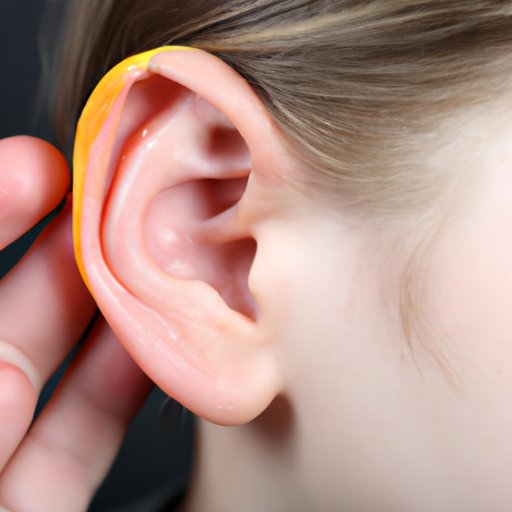
Introduction
An ear infection, also known as otitis media, is a common condition that occurs when the middle ear becomes inflamed and infected. It can affect people of all ages, but it is more common in children than adults. Ear infections can be caused by various factors and can have different symptoms and severity levels. They can range from mild discomfort to severe pain and hearing loss. Recognizing the signs and symptoms of an ear infection is crucial for timely treatment and prevention of complications.
Common Symptoms of Ear Infection
The most common symptom of an ear infection is ear pain, which can be sharp, dull, or throbbing. The pain may be constant or come and go. Other symptoms may include:
- Difficulty hearing
- Feeling of fullness or pressure in the ear
- Itching or irritation in the ear
- Ringing or buzzing in the ear (tinnitus)
- Fluid or pus drainage from the ear
- Mild to high-grade fever
Key Signs to Look Out for
In some cases, an ear infection may cause additional symptoms that require medical attention. These signs may include:
- Fever of 100.4°F (38°C) or higher
- Dizziness, vertigo, or loss of balance
- Facial muscle weakness or paralysis
- Nausea, vomiting, or diarrhea
- Severe headache or neck stiffness
Understanding the Causes of Ear Infections
Ear infections can be caused by several factors, including bacterial, viral, and fungal infections. The most common cause of ear infections is Eustachian tube dysfunction, which occurs when the tube that connects the middle ear to the back of the throat becomes blocked or swollen. This can happen due to various reasons, such as allergies, colds, and sinus infections. Water exposure and injuries to the ear can also lead to ear infections.
Diagnosing an Ear Infection
To diagnose an ear infection, a healthcare provider will usually perform a physical examination of the ear using an otoscope, a device that helps to see inside the ear canal and eardrum. If necessary, they may use a pneumatic otoscope to check for fluid behind the eardrum. Other tests that may be performed include tympanometry, which measures eardrum movement, and audiometry, which tests hearing ability.
The type and stage of an ear infection can vary, ranging from acute to chronic, and from mild to severe. In some cases, imaging tests such as X-rays, CT scans, or MRIs may be necessary to evaluate the severity of the condition.
Identifying Ear Infections in Children
Children may experience different symptoms than adults when they have an ear infection, such as pulling or tugging at the ear, trouble sleeping, irritability, and loss of appetite. It is essential for parents and caregivers to be aware of these symptoms and seek medical attention promptly. Early detection and treatment can help prevent long-term complications and hearing loss. Treatment options for children may include antibiotics, ear drops, and myringotomy (placement of ear tubes).
At-Home Remedies for Ear Infections
There are several ways to relieve ear pain and discomfort at home, including:
- Applying a warm compress or heating pad to the affected ear
- Taking over-the-counter pain relievers, such as acetaminophen or ibuprofen
- Using a humidifier or taking a steamy shower to help reduce congestion
- Using natural remedies, such as garlic oil, tea tree oil, or mullein oil
- Avoiding smoke, allergens, and environmental irritants that can trigger symptoms
- Gently cleaning the ear with a damp cloth or cotton swab to remove excess wax and debris.
Seeking Medical Attention for an Ear Infection
If your symptoms persist or become severe, or if you experience additional signs such as fever, dizziness, or drainage from the ear, it is important to seek medical attention promptly. Depending on the severity and cause of the infection, your healthcare provider may recommend various treatment options, such as antibiotics, ear drops, or surgery to drain the fluid from the middle ear or place ear tubes. Regular check-ups and follow-up care are also essential to prevent the recurrence of ear infections and possible complications.
Conclusion
Ear infections are a common condition that can cause significant discomfort and hearing loss in some cases. Recognizing the symptoms and signs of an ear infection is crucial for timely diagnosis and appropriate treatment. While some infections may resolve on their own or with home remedies, others require medical attention and prescription medication. Parents, caregivers, and individuals can take preventive measures to reduce the risk of ear infections, such as washing hands regularly, avoiding exposure to sick people, and getting immunized against common infections.
Resources and References:
- Mayo Clinic. Ear infection (middle ear). https://www.mayoclinic.org/diseases-conditions/ear-infections/symptoms-causes/syc-20351616
- National Institute on Deafness and Other Communication Disorders. Ear infections in children.https://www.nidcd.nih.gov/health/ear-infections-children
- Centers for Disease Control and Prevention. Preventing chronic disease. https://www.cdc.gov/pcd/issues/2014/14_0003.




